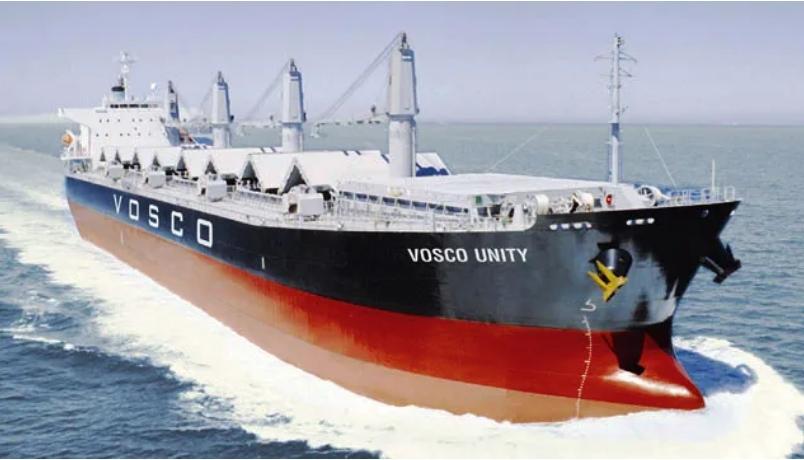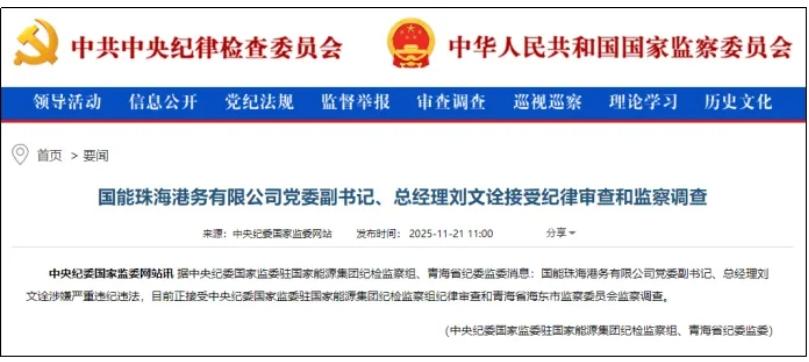《装卸时间与滞期费》第6版
CHAPTER 3 第3章
Commencement of laytime
装卸时间的起算
3.77在Hulthen v. Stewart Co—案中,该案甚至打到上议院,所争议的主要问题就是该租船合同是一个习惯性装卸时间的租约还是一份固定装卸时间的租约。对于该问题,所有法院都认为应是前者。尽管如此,初审法院和上诉法院法官都谈到了案中所涉及的船舶何时才算作抵达船的问题。该案中,涉及的船舶Anton轮往伦敦港运送原木。该轮抵达Gravesend后接到指示,去Surrey商业码头卸货。由于港口拥挤,在该轮能够进入码头的港池前和进去之后能够靠泊之前,都产生了一段延迟的时间,而且有证据表明Anton轮所装的约98%的货物要卸在Surrey商业码头,一少部分将卸在这条河的另一个堆场码头上,最后剩余的则要在港内其它的码头卸下。这些货在当时要么卸在码头上,要么卸往驳船上。而且在Anton轮卸货的当时,还可以证明,港内再也找不出比她所在的卸货处速度更快的卸货位置了。
3.78 At first instance, Phillimore J asked:
When was the Anton an arrived ship?
And answered:
In my opinion she was an arrived ship only when she reached a place at which she could discharge. Therefore when the vessel was at Gravesend, she had not arrived in London within the meaning of the charterparty, because it is not usual to discharge ships at Gravesend.
3.78在初审判决中,Phillimore法官首先提出:
Anton轮何时才成为抵达船?
接着他即回答道:
我认为,只有当她抵达了它能够卸货的地方才算抵达船。所以,当该轮抵达Gravesend时,她并不算抵达了租船合同中所指定的伦敦港,因为在Gravesend不是船舶通常卸货的地方。
3.79 In the Court of Appeal, Collins MR said:
. . . this vessel got, we will assume, to the Surrey Commercial Docks gate, the place where 98 per cent of the timber cargoes are discharged. If there had been an absolute obligation to discharge, with named days, I think she would then have been in a position to say that she was an arrived ship and that her lay days must begin to count. But here we are not tied to a specific number of days: so that she is an arrived ship on the day after she got into the Port of London, then we have to consider whether, in these circumstances, she has been detained beyond a reasonable time.
3.79在上诉法院,上诉法院院长Collins大法官说:
……我们假设,该轮到达了Surrey商业码头港池的入口处,并在那儿卸下了她所载的98%的原木。如果她负有绝对的义务,要在指定的天数内将货卸完,那么,我认为她早已经在此位置并完全可以将她视为抵达船,并且装卸时间必须开始起算。但是,在此我们不能纠缠于具体规定的天数:因此,在她进入伦敦港后当天就算是抵达船。接着我们必须要考虑的是,在这些情况下,该轮的延迟是否超出了合理的时间范围。
3.80 In the later case of Van Nievelt Goudriaan Stoomvaart Maatschappij v. C A Forslind & Son Ltd, Atkin LJ commented that in Hulthen v. Stewart, Phillimore J had found that the obligation upon the charterer to discharge did not arise until the Anton had in fact got to her berth. However, arrival at the specified destination and arrival at the place where the charterer’s obligation to load or discharge would not necessarily coincide in a charter with customary laytime, since the risk of delay between arrival at the specified destination and reaching a point where loading and discharging could commence would in ordinary circumstances remain with the shipowner.
3.80 在后来的案件Van Nievelt Goudriaan Stoomvaart Maatschappij v. C A Forslind & Son Ltd案中,Atkin大法官曾评论说:在Hulthen v. Stewart—案中,Phillimore法官已经认定:只有当Anton轮确实抵达其泊位,承租人的卸货义务才会产生。然而,(我认为)根据习惯性装卸时间的租船合同,船舶抵达指定目的地的时间与她抵达承租人的装/卸货义务产生地的时间并不一定相吻合,因为,在通常情况下,船舶抵达指定目的地与其抵达装卸作业能够开始的地方之间的延迟风险往往由船东承担。
3.81 The evidence in Hulthen v. Stewart was that the usual place of discharge for a vessel such as the Anton was in the Surrey Commercial Docks, either alongside a quay or into lighters. Therefore, it would seem that Phillimore J’s definition of when she was an Arrived ship would have been met when she entered the dock.
3.81在Hulthen v. Stewart证据显示,船舶诸如Anton轮通常的卸货地就是在Surrey商业码头里,要么靠泊在码头,要么卸往驳船上。所以,好像是Phillimore法官对何时船舶成为抵达船的定义,本应该在她进入码头时就已经符合这一条件。
3.82 Collins MR’s statement as to when the Anton was an Arrived ship is more difficult to understand, since he appears to be saying that there is a difference between when this happens in a customary laytime as opposed to a fixed laytime charter. Interestingly enough, neither point he selects appears to coincide with that chosen by Phillimore J. It may be that, by getting to the dock gate, Collins MR meant after entering the dock gate, or it may be that he had in mind an argument which found favour with the Court of Appeal in Nelson v. Dahl, where a distinction was drawn between entry into a privately controlled dock, such as the Surrey Commercial Docks, and arrival in the general area of a port. In that case, James LJ said:
There is, in my mind, a marked and broad distinction between the port of discharge, the usual public place of discharge in that port, which it is the shipowner’s business at all events and at his own risk to reach and the private quay, wharf or warehouse, or private dock, adjoining or near the port, on which or in which he is to co-operate with the merchant in the delivery of the cargo.
A little earlier in his judgment, he also said:
In my opinion it is more reasonable to hold that the voyage, qua voyage, ends where the public highway ends, and that everything afterwards is part of the mutual and correlative obligations of the shipowner and merchant...
3.82上诉法院院长Collins大法官关于Anton轮何时算作抵达船那段陈述更难理解,因为他似乎是说,何时起算问题在习惯装卸时间和固定装卸时间租约之间存在着差别。更有趣的是,他所选择的观点没有一个与Phillimore法官所选的观点是一致的。对待到达港池入口这一问题,Collins大法官的意思可能是要进入闸口才能起算,也许他脑海中已存在这样一个观点,支持上诉法院在Nelson v. Dahl案中判定的观点,在那个案件中,把进入私人控制的码头,如Surrey商业码头,和抵达港口的一般普通区域进行了区分。在那个案子中,James大法官说:
我认为,二者之间明显的和广泛的区别是,抵达卸货港,某港通常的公共卸货区域,这是船东在任何情况下都应由他本人承担的业务和风险,而抵达连接或靠近港口的私人码头或仓库,并在那里进行交付货物则是需要船东与货主共同协作。
在他的判词的前面部分,他还说过:
在我看来,更合理地判定,航程或作为航程理所应当在公共交通干线的末端结束,而在此之后的所有事情均是船东和货主互助互惠共同负责的一部分义务……
3.83 It must be remembered that when the Anton was an Arrived ship was not directly in issue in Hulthen v. Stewart, but what the case does show is that, even in the first part of the first decade of this century, it was by no means decided when the specified destination was reached in a port charter. This question, however, arose for direct decision in Leonis Steamship Co v. Rank (No 1) in which the controversy as to whether a vessel under port charter had to reach a place where it could load or discharge before reaching its specified destination was finally settled. The answer given by the Court of Appeal, that it was not so necessary, is also the start point of further disagreement as to where within the port limits a vessel must be to have arrived at its specified destination.
3.83值得提醒的是,Hulthen v. Stewart—案的直接争议并不是Anton轮何时成为抵达船的问题。但是从这个案子中我们可以看出,甚至在本世纪(指20世纪)的第一个十年的开始阶段,在港口租船合同中还从未判定过何时才算抵达指定的目的地。然而,在Leonis Steamship Co v. Rank ( No 1)—案直接的判决中,出现了这个问题。当时的争论是在港口租船合同下一艘船舶在抵达她的指定的目的地以前是否必须抵达一处她能够进行装卸的地方,这个争论最后得以解决。上诉法院给出的答案是,这没有这个必要。但从这个答案开始又引发了另一个争议,即船舶为了最终抵达指定目的地究竟应处于港口之内什么位置。
3.84 The facts of the case were straightforward and not in dispute. Under a voyage charter, the steamship Leonis was ordered to Bahia Blanca in the River Parana to load. On arrival, she was unable to go alongside the railway pier, the designated loading place, as all berths were full. She therefore anchored some three ship lengths off the pier to await a berth, which did not become available for a month. The charter provided for specified laytime to commence 12 hours after written notice was given that she had reached her destination. At first instance, Channell J held that the place where she anchored was a possible loading place, but not the usual one, and on that basis found that laytime did not commence until arrival in berth. This was unanimously reversed by the Court of Appeal who decided laytime commenced 12 hours after notice of readiness had been given by the master on anchoring off the pier on arrival within the port.
3.84 该案的事实简单明了并没有争议。按照航次租船合同,Leonis轮被指示前往阿根廷Parana河的Bahia Blanca港装货(注意:此处有误,该港并不在该河道内)。当船舶抵达后,由于当时所有的泊位都占满了,该船无法靠上指定的装货位置/一个铁路线突堤码头。因此,她就在距该指定的码头约3个船长的地方拋锚等泊,结果一等就等了 1个月。该合同规定:装卸时间从船舶抵达了指定的目的地并递交了书面的准备就绪通知书后的12小时开始起算。在初审法院,Channell法官判定:该轮拋锚的地方也可以进行装货,只不过不是通常的装货位置。故在此基础上判定装卸时间应从该轮靠泊后起算。这个判决后来被上诉法院全体成员一致推翻,上诉法院判定:装卸时间应从该轮抵达了该港内,锚泊于该码头附近并由船长递交了准备就绪通知书后的12小时起算。
3.85 In the Court of Appeal, judgments were given by Buckley and Kennedy LJJ. Lord Alverstone CJ, who presided, concurred in both. In The Johanna Oldendorff, Lord Reid said of the judgments given in The Leonis case:
It has always been held that the Court of Appeal in Leonis laid down general principles which must be followed: The difficulty has been to find out what those principles are. Buckley and Kennedy LJJ each delivered long judgments and Lord Alverstone CJ agreed with both. So he must have thought that there was no substantial difference between them. And that has been the view of almost all the many judges who have since then had to consider the matter. The judgment of Kennedy LJ has generally been regarded as the leading judgment, perhaps because it is rather less obscure than that of Buckley LJ. The charterers in this case invited us to concentrate on the judgment of Buckley LJ. I would agree that it is capable of being read as being more favourable to the charterers than that of Kennedy LJ. But I am far from being satisfied that it ought to be so read, and I would adopt the general view hitherto held that there is no substantial difference between them.
Both judges reviewed the existing authorities in detail. In the course of his judgment, Buckley LJ said:
The true proposition, I think, is that, where the charter is to discharge in a named place which is a large area in some part or in several parts of which the ship can discharge, the laydays commence so soon as the shipowner has placed the ship at the disposal of the charterer in that named place as a ship ready, so far as she is concerned, to discharge, notwithstanding that the charterer has not named, or has been unable owing to the crowded state of the port to name, a berth at which, in fact, the discharge can take place.
3.85在上诉法院,是由Buckley大法官和Kennedy大法官做出判词。首席法官Alverstone勋爵主导并同意他们俩的观点。在The Johanna Oldendorff—案中,Reid勋爵也谈到他对Leonis—案判词的看法:
已经得到公认,上诉法院在The Leonis—案中奠定这一基本原则必须得以遵循:困难已经查明这些原则之所在。Buckley大法官和Kennedy大法官都发表了长篇的判词,而且主审法官Alverstone勋爵也表示赞同。所以,他必然已经想到,他们俩人之间的观点没有什么实质性的差别。于是,这几乎成了所有大法官从此都必须要考虑的问题。也许是因为Kennedy大法官的判词较Buckley大法官的更清楚些,所以被普遍认作是具有指导意义的判决。本案(The Johanna Oldendorff)的承租人提请我们注意Buckley大法官的判决词。我认同,该判决词是相比较Kennedy大法官的判词,可以被解读为更有利于承租人。但是我远远不会相信该判词就应该这样来理解,反而,我采纳当前普遍的观点判定这两份判词之间并不存在实质性区别。
这二位法官当时都详细地审阅了已有的判例。Buckley大法官在其判决中说道:
我认为,真正的问题是,如果合同中规定船舶应在一个指名的地方卸货,而该地方是一个较大的区域,其中包括有许多该轮可以进行卸货作业的一些或几个位置,那么,一旦船舶到达这一指明的地方,只要船东已把船舶置于承租人的支配之下,并且,就船舶本身而言,也已做好了卸货的准备,即可起算装卸时间,无论这时承租人还没有指定,或者由于该港的拥挤状况还未能指定该轮实际能够卸货的泊位。
3.86 He then explained that in the term ‘‘berth’’ he included ‘‘a berth or a wharf or a quay, or a place where by the use of lighters or other means a vessel can load or discharge’’. Later in his judgment, Buckley LJ referred to the commercial ambit of the port, as distinguished from the whole port in a geographical or maritime sense, and said that this covered ‘‘such part of the port as is a proper place for discharging’’. He emphasised that this was an area of the port and not just a berth. Arrival in the commercial ambit of the port meant the end of the voyage.
3.86接着,他解释道,‘泊位’这个术语,并认为应该包含‘船舶可以在借助驳船或者其他方式进行装卸货作业的泊位、停泊处,或者码头,或者某一地点’。后来,在他的判词中,Buckley大法官又提到港口的商业区域范围,以区别于整个港口的地理意义或海运意义,并说着包括‘该港的这一部分即为卸货的合适地点’。他而且强调:这是指港口的一个区域,并不是单单只指某个泊位。抵达港口的商业范围就意味着航程的结束。

《装卸时间与滞期费》购买链接(点击可购买)
海运圈聚焦专栏作者 魏长庚船长(微信号CaptWei)

 2019-01-02
2019-01-02 719
719 












